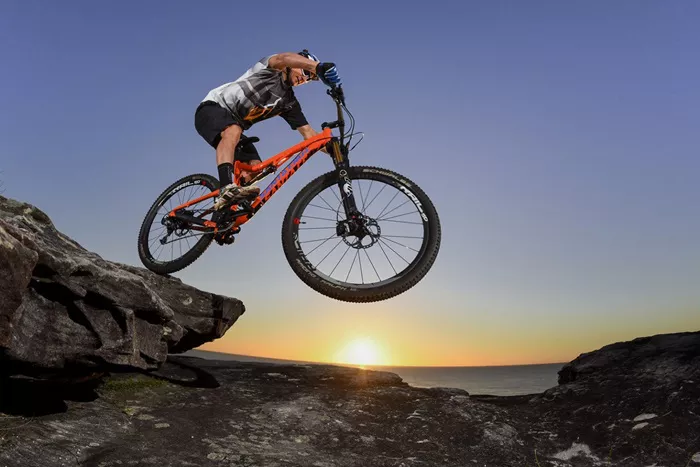Mountain biking is an exhilarating sport that not only provides a rush of adrenaline but also offers a comprehensive workout for various muscle groups. Riders engage multiple muscles while navigating trails, climbing hills, and maneuvering through obstacles. Understanding which muscles are primarily used can help cyclists improve their performance and reduce the risk of injury.
The Importance of Muscle Engagement in Mountain Biking
Mountain biking involves both aerobic and anaerobic activities, requiring strength, endurance, and agility. The sport demands a unique combination of muscle groups that work together to maintain balance, power the bike, and absorb shocks from uneven terrain. By identifying these muscles, riders can tailor their training regimens to enhance their biking experience.
Key Muscle Groups Engaged in Mountain Biking
Leg Muscles
Quadriceps: Located at the front of the thighs, the quadriceps are crucial for pedaling power. They extend the knee during the downstroke of pedaling.
Hamstrings: These muscles, found at the back of the thighs, work in opposition to the quadriceps. They assist in bending the knee and play a vital role during the upstroke.
Calves (Gastrocnemius and Soleus): The calf muscles help stabilize the ankle during pedaling and contribute to overall leg strength.
Glutes (Gluteus Maximus, Medius, and Minimus): The glutes are essential for powerful pedal strokes and maintaining stability on uneven terrain.
Core Muscles
Abdominals: The abdominal muscles help maintain posture while riding and provide stability during turns and jumps.
Obliques: Located on the sides of the abdomen, these muscles assist in twisting movements and help stabilize the torso.
Erector Spinae: This group of muscles runs along the spine and is crucial for maintaining an upright position on the bike.
Upper Body Muscles
Shoulders (Deltoids): The deltoids are engaged while steering and controlling the bike, especially during aggressive maneuvers.
Back Muscles (Latissimus Dorsi and Trapezius): These muscles support upper body strength and are important for maintaining control over rough terrain.
Biceps and Triceps: The biceps assist in pulling the handlebars towards you while climbing or lifting the front wheel. The triceps help stabilize your arms during descents.
Stabilizing Muscles
Hip Flexors: These muscles are engaged when lifting your knees during pedaling and play a role in maintaining balance.
Forearm Muscles: Strong forearms are essential for grip strength on handlebars, which is crucial for control during descents.
How Each Muscle Group Contributes to Performance
Each muscle group plays a specific role in enhancing performance during mountain biking:
Leg Muscles: They provide the primary power needed for pedaling.
Strong legs enable faster climbs and more efficient descents.
Core Muscles: A strong core stabilizes your body, allowing for better control over rough terrain and enhancing endurance during long rides.
Upper Body Muscles: These muscles allow for effective steering and control of the bike, especially when navigating technical trails.
Training Recommendations for Mountain Bikers
To maximize performance on the trails, mountain bikers should incorporate specific exercises that target these muscle groups:
Leg Strengthening Exercises
- Squats
- Lunges
- Deadlifts
- Leg Press
Core Strengthening Exercises
- Planks
- Russian Twists
- Bicycle Crunches
- Medicine Ball Throws
Upper Body Strengthening Exercises
- Push-Ups
- Pull-Ups
- Dumbbell Rows
- Shoulder Presses
Stabilization Exercises
- Single-Leg Balances
- Bosu Ball Exercises
- Stability Ball Workouts
Importance of Flexibility And Recovery
In addition to strength training, flexibility exercises such as yoga or dynamic stretching can enhance performance by improving range of motion. Recovery is equally important; incorporating rest days allows muscles to repair and grow stronger.
Conclusion
Mountain biking is a full-body workout that engages multiple muscle groups, primarily focusing on the legs, core, upper body, and stabilizing muscles. Understanding which muscles are utilized can help riders optimize their training programs for improved performance on the trails. By focusing on strength training, flexibility, and recovery strategies, mountain bikers can enhance their endurance, power, and overall riding experience.
Riders should remember that individual fitness levels vary; therefore, it is essential to listen to one’s body and adjust training intensity accordingly. Whether you’re a beginner or an experienced cyclist, focusing on these muscle groups will lead to better performance and enjoyment in this thrilling sport.
Related topics:
- What Shoes to Wear Mountain Biking?
- How to Improve Uphill Mountain Biking?
- Why Do They Blow Whistles in Mountain Biking?

